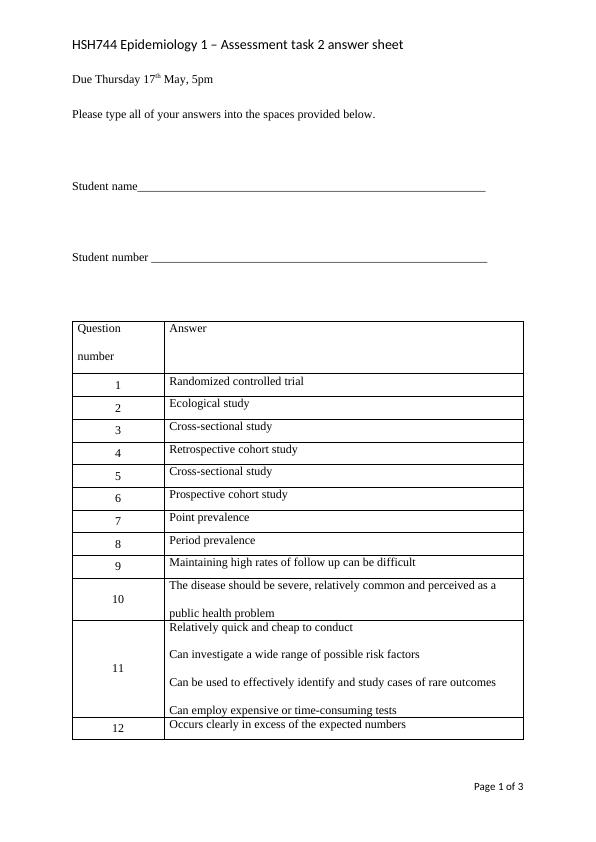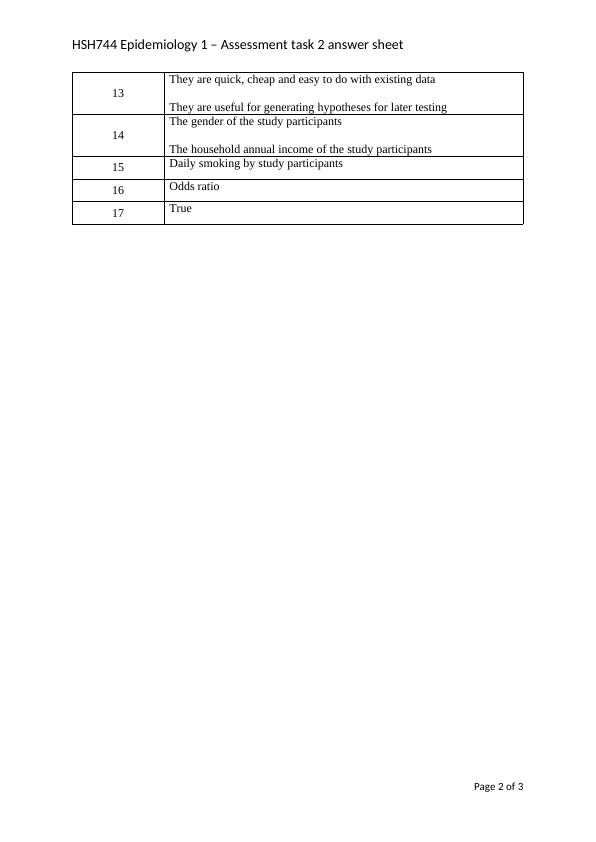HSH744 Epidemiology Assessment
6 Pages1020 Words17 Views
Added on 2021-05-30
HSH744 Epidemiology Assessment
Added on 2021-05-30
ShareRelated Documents
End of preview
Want to access all the pages? Upload your documents or become a member.
Research Study on Long-term Effect of Physical Activity on Incidence of Coronary Heart Disease
|8
|2299
|302
Cross-Sectional Study - Research Paper
|4
|800
|46
Interpreting and Evaluating Health Evidence
|10
|1836
|227
Sampling Frame and Disease Risk Assessment in Epidemiology
|6
|1345
|444
Epidemiology: Observational Studies on Alzheimer's Disease and Green Spaces
|7
|1889
|208
A cross-sectional study design to conduct a multi-level exposure control experiment
|14
|2013
|489



